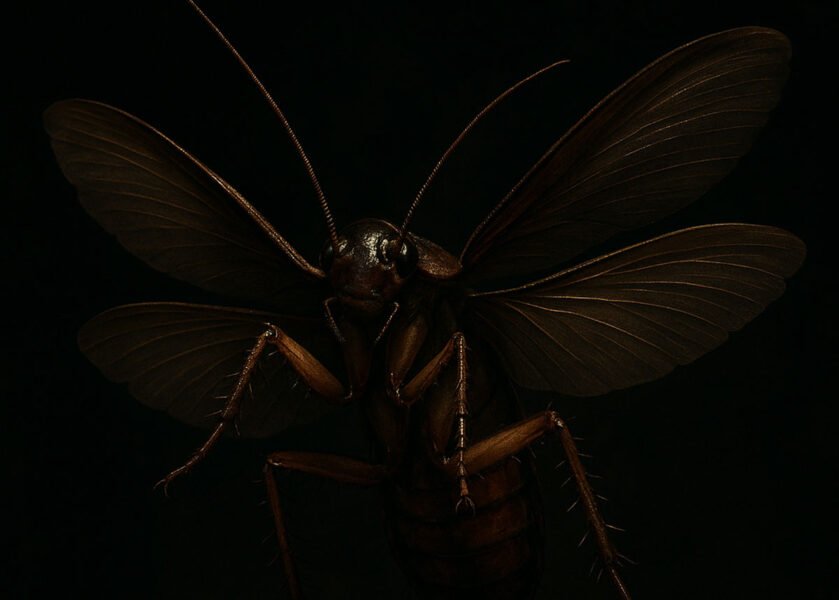Skip to the good bit
ToggleNot Just a Myth: Do Cockroaches Really Fly?
The mere sight of a cockroach is enough to send a shiver down anyone’s spine, but the thought of one launching into the air? That’s a horror movie scene come to life. While it might seem like a freak occurrence, some cockroach species are surprisingly capable of flight. But when it comes to taking to the skies, not all roaches are born with the same talents.
Many of these pests have fully formed wings but are more like clumsy gliders, using them to drift from a high perch to a lower spot. Then there are the true aviators of the roach world, strong flyers that can navigate through the air with unsettling ease. Knowing which type of flying roach you’re facing is the first step in reclaiming your peace of mind.
Identifying the Winged Intruders: Common Flying Roach Species
Out of the thousands of cockroach species across the globe, only a select few are common winged intruders in our homes. Getting to know these unwelcome guests is crucial for effective control.
American Cockroach
As one of the largest and most notorious household pests, the American cockroach is more of a daredevil glider than a true pilot. It uses its impressive wings to drop from high places like trees or cabinets, creating a startling illusion of flight as it descends into your personal space.
Asian Cockroach
Easily confused with the non-flying German cockroach, the Asian cockroach is a skilled and active flyer. It has a peculiar attraction to light, which means you’re likely to find it buzzing around your porch lights or trying to get in through a window at night.
Smokybrown Cockroach
True to its name, this roach sports a uniform, dark mahogany sheen. The smokybrown cockroach is a master of the air, with powerful wings that stretch beyond its body. It thrives in warm, humid climates and is a frequent, unwelcome sight in southern regions.
Wood Roach
These roaches are creatures of the great outdoors, typically living in and around wooded areas. The males are proficient flyers and are often drawn to lights after dark, sometimes finding their way inside by accident. Fortunately, they don’t establish infestations indoors.
Why Do They Take Flight? Understanding Flying Roach Behavior
When a roach takes to the air, it’s not just for the thrill of it. These pests much prefer to scuttle along the ground, where they can more easily forage for their next meal. Flight is usually a response to a specific trigger.
Often, it’s a desperate escape plan. A cornered or threatened cockroach will use its wings as a last-ditch effort to evade a predator—or your shoe. This explains the sudden, chaotic aerial launch when you least expect it.
Environment also plays a huge part. Soaring temperatures and high humidity can energize cockroaches, making them more prone to flight. Their attraction to light sources acts like a beacon, guiding these flying pests straight to your home in the dead of night.
The Hidden Dangers: Health Risks Posed by Flying Roaches
More than just a startling nuisance, a flying roach is a mobile health hazard. These insects are infamous for their love of unsanitary environments, from grimy sewers to overflowing garbage cans, where they collect a nasty cocktail of bacteria and pathogens.
Once inside your home, they become tiny couriers of disease, contaminating every surface they touch. They are known to carry germs like Salmonella and E. coli, which can cause severe food poisoning and other digestive illnesses.
What’s more, their shed skins, droppings, and even their saliva are loaded with potent allergens. For anyone with asthma or allergies, an infestation can become a serious health crisis, triggering everything from skin rashes to debilitating asthma attacks.
From Outdoors to Indoors: Where Do Flying Roaches Hide?
Flying roaches are masters of infiltration, adept at finding their way into your home and even better at disappearing once inside. They often start their journey outdoors, nesting in woodpiles, leaf litter, and damp mulch.
Their search for food, water, and shelter inevitably leads them indoors. A leaky pipe, a humid basement, or a cluttered attic is an open invitation for them to move in and make themselves at home.
Once they’ve breached your defenses, they seek out dark, undisturbed corners. You’ll find them hiding behind refrigerators, lurking under sinks, tucked away in cabinets, and living within the walls themselves, often remaining unseen until their population has exploded.
Taking Back Your Home: Effective Prevention and Control
When it comes to dealing with a flying roach, prevention is always the best strategy. A clean home and sealed entryways are your most powerful weapons in this ongoing battle.
Start by declaring war on crumbs and clutter. Store all food in airtight containers, wipe up spills the moment they happen, and keep your garbage tightly sealed. A tidy home offers fewer places for these pests to hide and less to sustain them.
Next, become a fortress builder. Seal every crack and crevice you can find in your foundation, around windows, and where pipes enter your home. Make sure your window and door screens are in good repair and fit snugly.
When Professional Help is the Best Solution
If you’re spotting flying roaches more than just occasionally, you’re likely dealing with a full-blown infestation. While DIY traps and sprays can offer temporary relief, they rarely solve the underlying problem.
A professional pest control team has the knowledge and tools to do what most of us can’t: identify the exact species, hunt down their nests, and execute a precise, effective treatment plan.
Don’t let these winged nightmares take over your home. Tackling a flying roach problem head-on is essential for the health and safety of your family. When you’re outmatched, calling in the experts is the smartest move you can make.







